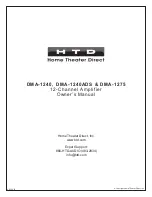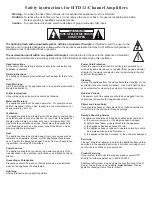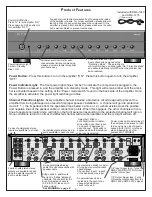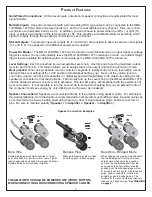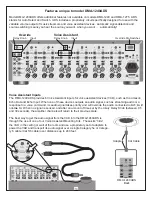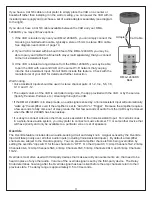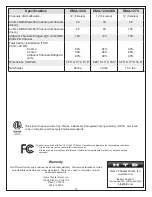
11
If you have a Cat 5/6 cable run but prefer to simply place the VAD on a counter or
bookshelf rather than installing it in the wall or ceiling, you can power the VAD with its
included power supply and purchase a set of audio adapters separately (see diagram
to the right).
If you do not have a Cat 5/6 cable available between the VAD and your DMA-
1240ADS, you may still have options:
If the VAD is located very near your DMA-1240ADS, you can simply connect the
1.
two using a shielded audio cable, typically a stereo 3.5mm to stereo RCA cable.
See diagram near bottom of page 10.
If your VAD is located within about 30 feet of the DMA-1240ADS, you may be
2.
able to pair your VAD with a Bluetooth player (sold separately) that you connect
to the Voice Assistant Input.
If the VAD is located a long distance from the DMA-1240ADS, you may be able
3.
to pair the VAD with a second VAD on the same Wi-Fi network that you plug
into the Voice Assistant Input. Not all VADs include this feature. Check with the
manufacturer of your VAD for details and further instruction.
Worth noting . . .
Voice Assistant Inputs should be used in stereo channel pairs of 1-2, 3-4, 5-6, 7-8,
•
9-10, and 11-12.
The output volume of the VAD is controlled using voice, the app provided with the VAD, or by the service
•
(Spotify, Pandora, Podcast, etc.) streaming through the VAD.
If the DMA-1240ADS is in sleep mode, an audio signal sensed by a Voice Assistant Input will automatically
•
“wake up” the amplifier even if the amplifier is set to “Auto-On” or “Trigger”. Because the amplifier requires
a few seconds to fully come out of sleep mode, the first few seconds of audio from the VAD may be missed
when the DMA-1240ADS has been asleep.
It is okay to connect a device other than a voice assistant to the Voice Assistant Input. For certain zones
•
in a whole-house audio system, you may prefer to connect a music streamer, TV or some other device that
will have priority and only be available to a particular zone or set of speakers.
Override
The Override feature includes its own audio-sensing circuit and delay knob. A signal sensed by the Override
Input will take priority over all other audio inputs (including Voice Assistant Inputs). By default, all amplifier
channels are subject to the Override priority. You can prevent amplifier channels from being overridden by
setting the override “dip switch” for those channels to “OFF”. On the dip switch: 1=Amp Channels 1&2, 2=Amp
Channels 3&4, 3=Amp Channels 5&6, 4=Amp Channels 7&8, 5=Amp Channels 9&10, and 6=Amp Channels
11&12.
Override is most often used with third-party devices that make security announcements, etc. that need to be
heard in place of any other audio. Volume of the override signal is set by the third-party device. The Delay
Knob determines how long after the Override signal has been silent before the amp channels return to their
previous state. The delay range is approximately 0.5 to 30 seconds.
DMA-1240ADS
Back
Cat Cable
Adapters

